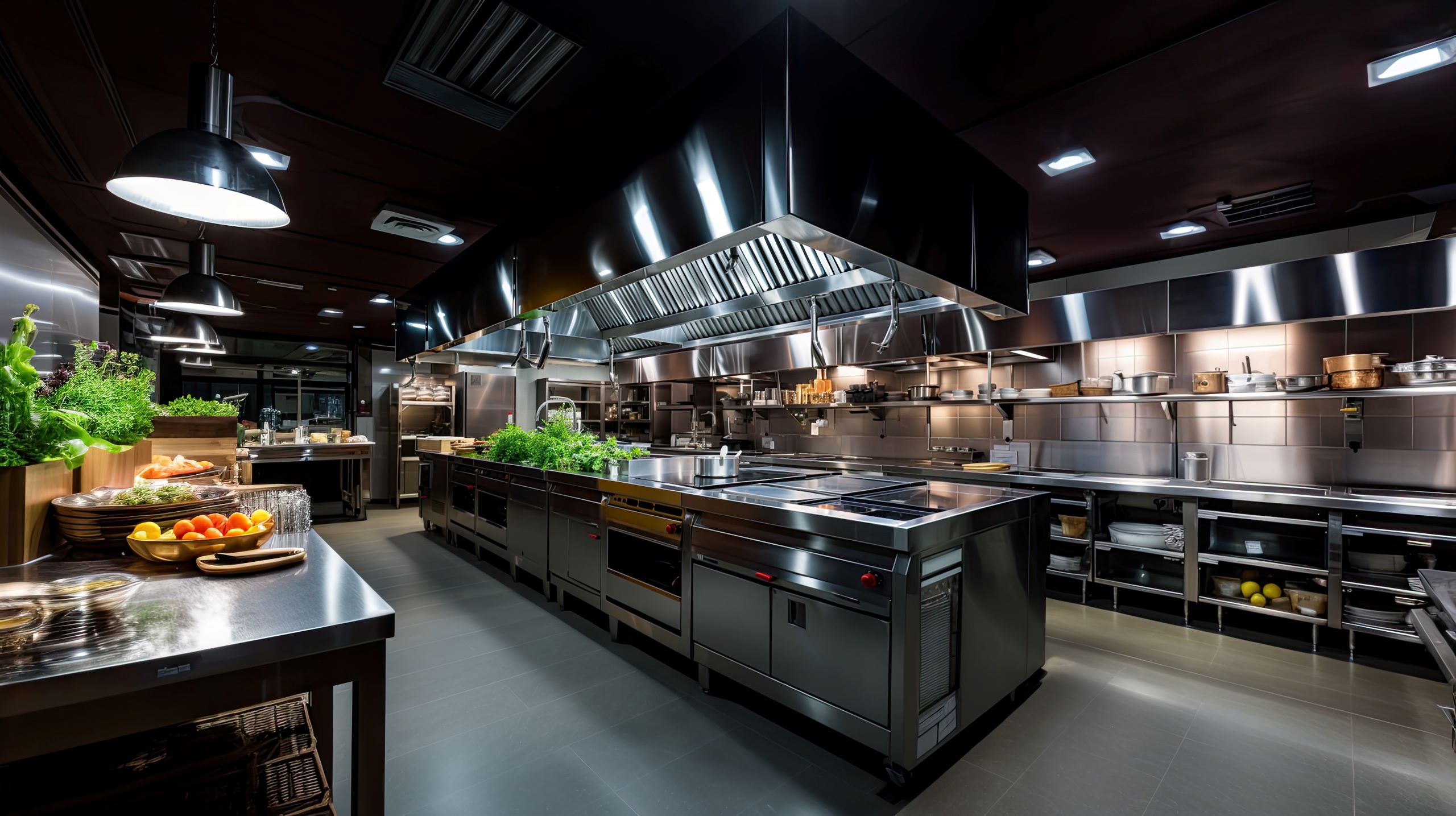
Blogs
.jpeg)
Chunky cookies with crisp edges and soft centres have a special appeal. Re-creating that bakery texture at home calls for careful attention to technique rather than complicated tricks. Ingredient choices, mixing habits, and temperature control all shape how a cookie looks and tastes. The following seven sections outline practical ways to produce generous cookies with consistent results.
.

How to Plan a Budget-Friendly Vietnamese Catering Event
Planning a catering event can feel overwhelming, especially when you’re trying to stick to a budget. But don’t worry!
Vietnamese food is not only delicious but also a fantastic choice when feeding a crowd without spending a fortune. With fresh ingredients, bold flavours, and plenty of cost-effective catering options, you can create an amazing spread that won’t break the bank.
Follow these simple steps to plan a budget-friendly Vietnamese catering event that your guests will love! 🎉

Finding the perfect coffee beans that match your taste profile can transform your morning cup from ordinary to extraordinary. With so many options available, from Arabica beans to specialty coffee beans, navigating through the variety can feel overwhelming. However, understanding the nuances in bean types, roast levels, and flavor profiles is critical to selecting quality beans that suit your preferences and bring you closer to that perfect cup.
Here's how to navigate the coffee world and choose coffee beans that suit your taste profile.
1. Understand the Types of Coffee Beans
Not all coffee beans are created equal. Most coffee fans are familiar with Arabica beans, known and loved for their smooth flavor and aromatic qualities. These beans often have a subtle, sweet taste with hints of fruit or sugar, making them a popular choice among coffee lovers. In contrast, Robusta beans are less common in specialty coffee and tend to have a richer, more bitter flavor with higher caffeine content. For those who appreciate solid and robust flavors, Robusta is an excellent choice.
For a richer experience, specialty coffee beans are often preferred. These are typically single-origin coffees sourced from specific regions, ensuring a unique flavor profile that reflects their coffee origins. For example, South American coffee often features notes of chocolate and nuts, ideal for those who appreciate deeper, earthy flavors.
To explore more about premium options, Vittoria Coffee offers a range of single-origin and certified organic beans that cater to discerning palates.
2. Consider Roast Levels and Their Impact on Flavor
The roast level of coffee beans dramatically affects their flavor, aroma, and even caffeine content. Coffee experts usually differentiate between light roast, medium roast, and dark roast coffee, each providing a unique drinking experience:
- Light roast coffee: This roast level retains more of the coffee cherry's original flavor and has higher acidity. It's perfect for coffee drinkers who appreciate floral or fruity subtle notes and a brighter cup.
- Medium roast coffee: Medium roast is a favorite among many because it balances flavor, aroma, and body. It often highlights the beans' processing method, revealing complex flavor profiles while still maintaining some of the bean's natural characteristics.
- Dark roast coffee: For those who love rich, smoky undertones, dark roasts offer a robust and sometimes bittersweet taste. While dark roasts tend to have lower acidity, they often mask the bean's origin flavors with more potent, bolder profiles.
Choosing between light, medium, or dark roasts depends on your taste preference. Some coffee lovers find that cold brew methods bring out the best in dark roasts, while French press users often opt for medium roasts to achieve a balanced cup.
3. Freshness Matters: Look for the Roast Date
The roasting process is essential to the overall quality of coffee. Freshly roasted coffee beans yield the finest flavor, so verifying the roast date on the packaging is essential. Coffee that's too old can taste stale, while beans roasted in small batches and sold shortly after roasting ensure a fresher, more vibrant taste.
4. Pay Attention to Origin and Certifications
The region where the coffee is grown heavily influences its unique flavor profile. For example, South American coffee is known for being full-bodied with notes of chocolate and nuts, while African coffees often showcase floral and fruity characteristics. Buying single-origin coffees helps you understand the specific flavor nuances tied to their region.
Additionally, choosing organic coffee and fair trade certified beans supports sustainable practices and the ethical treatment of coffee farmers. This not only benefits the environment but ensures you're sipping on quality beans that have been responsibly sourced.
5. Consider Your Brewing Method
Your preferred brewing method can determine the best type of beans to buy. Espresso beans are typically roasted darker to produce a rich crema and intense flavor. Meanwhile, if you want a quick drink yet desire a more robust flavor, you can consider specialty varieties crafted from freshly roasted coffee beans. For French press users, a medium roast can produce a smooth, well-rounded cup.
If you're a fan of experimenting with different brew types, buying green coffee beans and roasting them at home can be an adventurous way to customize your coffee. Home roasting allows you to adjust the roast level to suit your taste, from light to dark.
6. Buy Quality Beans
While a grocery store can be a quick stop for ground coffee, there are better places for quality beans. Look for specialty coffee shops or order beans directly from roasters that emphasize small-batch roasting and fresh coffee beans. Subscribing to a coffee bean subscription service can also be a convenient way to try new varieties from trusted roasters.
For those looking for certified organic or specialty coffee, research the roaster's practices to ensure they prioritize quality and sustainable sourcing. Coffee labeled with 'fair trade' or 'organic' often meets higher production standards, benefitting not just you but the entire coffee ecosystem.
7. Final Tips for Coffee Lovers
To keep your beans beautiful and delicious, store them in an airtight container away from light, heat, and moisture. Whole beans maintain their quality longer than ground coffee, so it's best to store them whole and grind them just before brewing.
Grinding your beans right before you brew ensures the freshest and most flavorful cup. Utilize a burr grinder to achieve a uniform grind size, as this enhances the extraction of optimal flavor during the brewing process. Tailor the grind size to your brewing method—coarser for French press and finer for espresso—to enjoy the perfect cup every time.
Conclusion
Whether you prefer the subtle notes of light roast coffee, the balanced body of a medium roast, or the rich intensity of dark roasts, taking the time to explore and experiment will help you discover what best suits your palate. Remember, sourcing freshly roasted coffee beans from reputable coffee shops or opting for beans directly from trusted roasters will ensure you're enjoying the finest quality with every brew. So, invest in quality, explore single-origin selections, and savor the journey to finding your perfect cup.

Good nutrition is essential for the health and well-being of older adults, particularly those residing in aged care homes. The Royal Commission into Aged Care Quality and Safety has underscored the critical link between food and nutrition and the overall quality of life for senior Australians. The findings from the Commission revealed alarming inadequacies in current food and nutrition practices within these facilities, with many residents receiving insufficient dietary attention. Despite the average spend on food in residential aged care homes rising to $36.89 per person per day in the Q1 2024 Reporting period.
Understanding Nutritional Needs of the Elderly
The nutritional needs of older adults differ significantly from those of younger populations. Key dietary requirements include adequate protein intake, sufficient vitamins and minerals, and proper hydration. Nutritional deficiencies are common in aged care settings, often leading to severe health consequences, including malnutrition, increased susceptibility to infections, and a heightened risk of falls and fractures.
The Australian Government’s recent initiatives, including the Basic Daily Fee (BDF) Supplement, aim to enhance the quality of food and nutrition services in aged care. This funding of $3.2 billion over four years is designed to help providers improve meal quality and ensure that nutritional needs are met. Yet, the reported average daily expenditure on food still falls short, with many facilities struggling to allocate adequate resources.
Assessing Nutritional Status in Aged Care Homes
Regular nutritional assessments are vital in aged care homes to ensure residents receive appropriate diets tailored to their specific needs. These assessments can involve a combination of clinical evaluations and dietary reviews conducted by qualified professionals such as dietitians.
With the BDF supplement, aged care providers are now required to report quarterly on their food-related expenditures and improvements in care. This initiative not only promotes transparency but also encourages facilities to focus on enhancing nutritional outcomes.
Creating a Nutritional Care Plan
Developing individualised meal plans is crucial for meeting the diverse dietary needs of residents. A well-structured nutritional care plan takes into account each resident's medical conditions, dietary restrictions, and personal preferences. Engaging residents in the meal planning process fosters a sense of autonomy and satisfaction, which can significantly enhance their dining experience.
To improve meal offerings, aged care homes should prioritise involving residents in menu selections. This can be achieved through food committees or tasting sessions, where residents sample and provide feedback on new dishes. Such initiatives not only ensure that meals meet the residents’ preferences but also promote community and interaction among residents.
Enhancing Meal Preparation and Presentation
The presentation of meals plays a crucial role in stimulating appetite, especially among elderly individuals who may face challenges in eating due to cognitive decline or physical limitations. Simple enhancements like using attractive plating techniques and garnishes can make meals more appealing.
Additionally, incorporating fresh, seasonal ingredients and a variety of dishes into the menu can combat monotony, encouraging residents to eat more healthily. Creative strategies, such as kitchen gardens where residents can grow their own herbs and vegetables, have shown promise in enhancing meal quality and engagement.
Innovative approaches like "Wanderfull Menus," which offer portable finger foods for residents with mobility challenges, exemplify how aged care homes can adapt to the unique needs of their residents. Such initiatives not only improve nutrition but also contribute to a more positive dining experience.
Involving Residents in Food Choices
Involving residents in food choices empowers them and enhances their quality of life. By engaging seniors in the decision-making process regarding their meals, aged care homes can cater to individual tastes and dietary needs more effectively. Organising regular taste-testing sessions or allowing residents to vote on menu items fosters a sense of community and belonging.
Technology can also play a role in enhancing resident involvement. Tablets and interactive systems can enable residents to select meals in advance, providing them with a sense of control over their dining experience.
Conclusion
Improving food and nutrition in aged care homes is not just about compliance with standards; it is a fundamental aspect of promoting the health and well-being of senior Australians. The Royal Commission has shed light on the pressing need for change, and recent government initiatives, including the Basic Daily Fee Supplement, offer pathways to enhance nutritional practices. Aged care homes must prioritise individualised meal planning, engaging residents in food choices, and improving meal presentation to foster a nourishing environment.
By addressing these critical areas, aged care providers can significantly improve the quality of life for residents, ensuring they receive the care and nutrition they deserve.

Renovating a commercial kitchen can feel like a daunting task. But it doesn't have to be! Whether you're a restaurant owner or chef looking to upgrade your culinary space, understanding the essential steps can make the process smoother and more enjoyable.
In this article, you'll learn the essential steps for commercial kitchen renovation. Dig in to transform your kitchen into a culinary haven!
1. Assess Your Needs and Goals
Before starting your renovation, take a moment to evaluate your needs and goals. Ask yourself why you are renovating. Are you aiming to boost efficiency, replace old equipment, or create a more welcoming space for staff and customers? Knowing your objectives will guide your decisions during the renovation.
Talk to your staff to gather their input. They can offer helpful feedback on the current kitchen layout, equipment, and workflow. Addressing their concerns will help create a space that meets business needs and boosts team member satisfaction.
Also, determining your needs and goals will point you toward the right commercial renovation experts to work with. When researching potential professionals, look for experienced and reputable kitchen renovation specialists, such as QN Kitchens. These experts can provide valuable insights and tailored solutions that align with your vision, ensuring a successful transformation of your commercial kitchen.
2. Set a Realistic Budget
After defining your goals, the next step is to create a realistic budget. Commercial kitchen renovations can add up quickly, so knowing how much you spend is essential.
To create a realistic budget, start by estimating costs for materials, equipment, labour, and unexpected expenses. It's wise to include a buffer for surprises to avoid financial stress later.
Prioritize your spending to make the most of your budget. Allocate more funds for critical areas like equipment and layout changes while finding ways to save in less crucial areas. This approach will help you stay within budget while ensuring you achieve your commercial kitchen renovation goals.
Review your budget regularly as the project progresses and stay updated on expenses to ensure you remain on track. Adjusting your budget as needed will help you make informed decisions and keep the commercial kitchen remodel project moving smoothly.
3. Design the Layout
Once you have your budget, it's time to focus on the kitchen layout. A well-planned layout is crucial for improving efficiency and workflow.
When designing your layout, consider how your kitchen staff will move around the kitchen. Aim for a commercial kitchen design that reduces unnecessary steps and promotes smooth operations.
The best part? There are several kitchen layouts to consider, such as the assembly line, zone-style, or open kitchen designs. Each has its benefits, depending on your specific needs. For example, an assembly line layout can be great for high-volume cooking, while an open kitchen can enhance customer interaction.
Consider using Computer-Aided Design (CAD) software to help visualize your new kitchen. This tool allows you to test different configurations and see how they affect workflow. Additionally, partnering with a professional designer ensures your kitchen is both functional and visually appealing.
4. Obtain the Necessary Permits
Before starting construction, it's vital to get the necessary permits. Building codes and health regulations can differ depending on your location. Familiarizing yourself with local requirements will help you avoid delays and extra costs later on.
Consult your local health department and building authority to find out what permits you need. However, the standard permits you'll likely need include food service permits, construction permits, and inspections. Understanding these requirements will help you stay organized and ensure compliance.
In addition to obtaining these permits, keep them in order for a smoother commercial kitchen renovation process. Proper documentation helps avoid potential legal issues that could arise during or after construction. Taking this step will save you time and stress as your project moves forward.
5. Choose Quality Catering Equipment
The commercial kitchen equipment you select for your commercial kitchen can also influence its efficiency and performance. Invest in high-quality appliances that meet your cooking and storage needs. Consider energy-efficient options to help save on utility bills in the long run.
When choosing equipment, think about the specific dishes you'll be preparing. This can help you determine the necessary appliances. For example, if you plan to offer a wide variety of baked goods, investing in a commercial oven is essential.
Remember to factor in maintenance and service agreements when making your selections. Reliable cooking equipment will save you time and money in repairs, allowing your kitchen to run smoothly.
6. Plan for the Renovation Phase
Once you have your design and equipment sorted, it's time to plan for the construction phase. This is where the renovation comes to life, but it can also be the most disruptive part of the process. Make sure you create a detailed timeline for your commercial kitchen renovation, outlining when different phases will occur.
Keep in mind that construction might affect your business operations. Consider scheduling kitchen renovations during off-peak hours or temporarily closing your kitchen if necessary. Communicate with your staff and customers about the changes to manage expectations.
Throughout the construction phase, maintain open lines of communication with your contractors. Regular check-ins will ensure the project stays on track and allow for quick resolution of any issues that may arise.
Conclusion
Renovating your commercial kitchen can be a rewarding experience that transforms your culinary space into a more efficient and inviting environment. With the above steps, you can create a kitchen space that's efficient, functional, and inspiring to your team and customers. Remember, a well-designed kitchen can significantly improve your operations, boost productivity, and enhance the overall dining experience. So, don't be afraid to dream big and take the leap.


